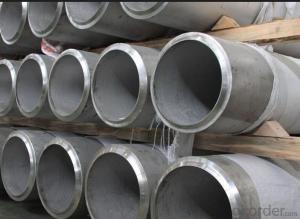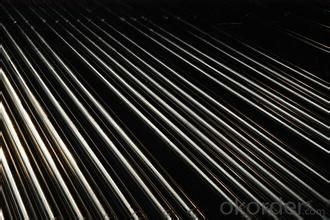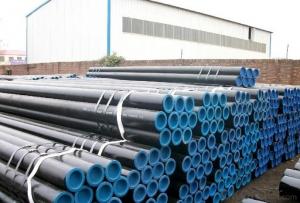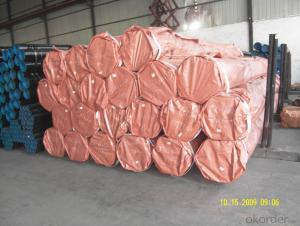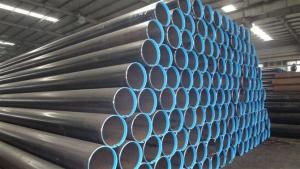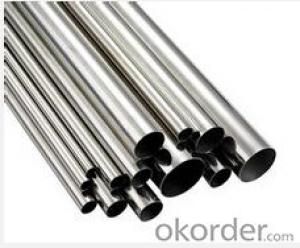Stainless Seamless Round Hot Rolled Pipe
- Loading Port:
- China main port
- Payment Terms:
- TT or LC
- Min Order Qty:
- 100 m.t.
- Supply Capability:
- 10000 m.t./month
OKorder Service Pledge
OKorder Financial Service
You Might Also Like
1、Structure of Seamless Pipe :
Seamless pipe is regarded as withstanding pressure better than other types, and was often more easily available than welded pipe.
2、Main Features of the Seamless Pipe :
• Strong heat dissipation ability
• Good visual effect
• Reasonable price
• High manufacturing accuracy
• High strength
• Small inertia resistance
3、Seamless Pipe Specification:
Standard | GB, DIN, ASTM ASTM A106-2006, ASTM A53-2007 |
Grade | 10#-45#, 16Mn 10#, 20#, 45#, 16Mn |
Thickness | 8 - 33 mm |
Section Shape | Round |
Outer Diameter | 133 - 219 mm |
Place of Origin | Shandong, China (Mainland) |
Secondary Or Not | Non-secondary |
Application | Hydraulic Pipe |
Technique | Cold Drawn |
Certification | API |
Surface Treatment | factory state or painted black |
Special Pipe | API Pipe |
Alloy Or Not | Non-alloy |
Length | 5-12M |
Outer Diameter | 21.3-610mm |
Grade | 20#, 45#, Q345, API J55, API K55, API L80, API N80, API P110, A53B |
Standard | ASME, ASTM |
1) Material:20#(ASTM A 106/A53 GRB.API5LGRB,GB),45#,16Mn,10#.
2) Specification range:OD:21.3-610mm,WT:6-70mm,length:6-12m or according to the requirement of clients.
3) Excutive standards:GB,ASME API5L.ASTM A 106/A53,Despite of the above standards,we can also supply seamless steel pipe with standard of DIN,JIS,and so on,and also develop new products according to the requirements of our clients!
4) Surface:black lacquered,varnish coating or galvanized.
5) Ends:Beveled or square cut,plastic capped,painted.
6) Packing:bundles wrapped with strong steel strip,seaworthy packing.
4、Packaging & Delivery
Packaging Details: | seaworthy package,bundles wrapped with strong steel strip |
Delivery Detail: | 15-30days after received 30%TT |
5、FAQ of Seamless Pipe :
①How is the quality of your products?
Our products are manufactured strictly according to national and internaional standard, and we take a test on every pipe before delivered out. Guaranteed: If products’ quality don’t accord to discription as we give or the promise before you place order, we promise 100% refund.
②How about price?
We are factory and be able to give you lowest price below market one, and we have a policy that “ for saving time and absolutely honest business attitude.Please trust the quotation we would give you, it is professional one.
③Why should you chose us?
Chose happens because of quality, then price, We can give you both.Additionally, we can also offer professional products inquiry, products knowledge train(for agents), smooth goods delivery, exellent customer solution proposals.Our service formula: good quality+good price+good service=customer’s trust
SGS test is available, customer inspection before shipping is welcome, third party inspection is no problem.
Any question, pls feel free to contact us !
6、Seamless Pipe
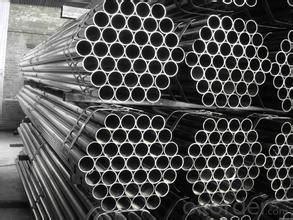
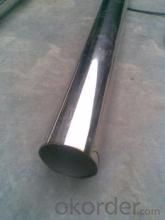
Images:
- Q: Can stainless steel pipes be used for underground drainage systems?
- Yes, stainless steel pipes can be used for underground drainage systems. Stainless steel is a durable and corrosion-resistant material that can withstand the harsh conditions often found underground, such as moisture, soil chemicals, and varying temperatures. It is also resistant to rust, which is a common problem in other types of pipes. Additionally, stainless steel pipes have a long lifespan and require minimal maintenance, making them a suitable choice for underground drainage systems.
- Q: What's the difference between stainless steel 302 and 304?
- [difference] 302 stainless steel and 304 stainless steel 304 stainless steel is one of the most widely used kind of chromium - nickel stainless steel, as a widely used steel, corrosion resistance, good heat resistance, low temperature strength and mechanical properties; punching, bending and other thermal processing, non hardening heat treatment (using temperature -196 to 800 DEG C). 302 stainless steel the carbon is relatively high (302 C = 0.15%; 304 C is less than or equal to 0.08%) and better strength. The other indicators are basically the same as those of 304.
- Q: Are stainless steel pipes suitable for heat exchangers?
- Yes, stainless steel pipes are suitable for heat exchangers. Stainless steel possesses excellent heat transfer properties and is resistant to corrosion and oxidation, making it an ideal material for heat exchanger applications. Its durability, high strength, and ability to withstand extreme temperatures make stainless steel pipes a reliable choice for efficient heat exchange.
- Q: Are stainless steel pipes suitable for oil drilling rigs?
- Yes, stainless steel pipes are suitable for oil drilling rigs. Stainless steel is highly resistant to corrosion and can withstand harsh drilling conditions, making it an ideal material choice for oil drilling operations.
- Q: Can stainless steel pipes be cold worked?
- Yes, stainless steel pipes can be cold worked. Cold working is a process in which the metal is deformed at room temperature, typically through processes like bending, drawing, or rolling. Stainless steel's excellent mechanical properties and ductility make it well-suited for cold working, allowing for the creation of complex shapes and designs while retaining its strength and corrosion resistance.
- Q: What are the factors to consider when selecting stainless steel pipes for a specific application?
- When selecting stainless steel pipes for a specific application, there are several factors to consider. These include the required level of corrosion resistance, the temperature and pressure conditions the pipes will be subjected to, the desired strength and durability, the compatibility with other materials in the system, the cost-effectiveness, and any specific industry or regulatory requirements. Additionally, factors such as the pipe size, wall thickness, and configuration should also be taken into account to ensure the pipes meet the specific needs of the application.
- Q: What is the difference between 2205 and 316 stainless steel pipes?
- The main difference between 2205 and 316 stainless steel pipes lies in their chemical composition and the resulting properties they exhibit. 2205 stainless steel is a duplex stainless steel, meaning it contains a combination of both austenitic and ferritic stainless steels. This composition provides it with excellent corrosion resistance, high strength, and good weldability. It is specifically designed to withstand highly corrosive environments, making it suitable for applications in the oil and gas industry, chemical processing, and marine environments. On the other hand, 316 stainless steel is an austenitic stainless steel that contains a higher percentage of chromium and nickel compared to 2205. This gives it superior corrosion resistance, especially against chlorides and other aggressive chemicals. It also exhibits good heat resistance and is commonly used in applications such as food processing, pharmaceuticals, and medical equipment. In terms of mechanical properties, 2205 stainless steel typically has higher tensile and yield strength compared to 316 stainless steel. This makes it more suitable for applications where strength and durability are critical factors. However, 316 stainless steel offers better formability and is easier to fabricate. In summary, while both 2205 and 316 stainless steel pipes offer corrosion resistance, the choice between them depends on the specific application requirements. 2205 is preferred for highly corrosive environments and applications requiring high strength, while 316 is commonly used in industries where superior corrosion resistance and good formability are essential.
- Q: What is the internal roughness of stainless steel pipes?
- The internal roughness of stainless steel pipes refers to the texture or surface finish on the inner walls of the pipe. It is a measure of the irregularities or bumps present on the internal surface. The roughness is usually quantified by measuring the average height of these irregularities, typically expressed as Ra (arithmetical mean deviation of the profile) or Rz (maximum height of the profile). Stainless steel pipes are known for their smooth and corrosion-resistant properties, which make them suitable for various applications in industries such as oil and gas, food processing, pharmaceuticals, and chemicals. The internal roughness of stainless steel pipes is typically low, resulting in minimal frictional resistance to fluid flow and improved hygienic properties. The internal roughness can vary depending on the manufacturing process, the grade of stainless steel, and the intended application. Stainless steel pipes can be manufactured with different surface finishes, such as pickled, annealed, or polished, which can affect the internal roughness. Polished surfaces generally have lower roughness values, providing smoother flow and minimizing the risk of contamination in applications that require high cleanliness standards. It is important to consider the internal roughness of stainless steel pipes when designing systems that involve fluid flow, as it can impact the pressure drop, flow rate, and overall efficiency. The roughness value is often taken into account in fluid dynamics calculations, such as determining the friction factor in pipe flow equations. To ensure the desired internal roughness, stainless steel pipes are often subjected to post-processing treatments, such as electropolishing or mechanical polishing, which can further reduce the roughness and improve the surface finish. These treatments enhance the performance and longevity of stainless steel pipes in critical applications where minimal frictional resistance, high cleanliness, and corrosion resistance are essential.
- Q: Can stainless steel pipes be insulated with mineral wool?
- Certainly, mineral wool is a viable option for insulating stainless steel pipes. Widely utilized in multiple sectors like plumbing and construction, mineral wool serves as a reliable and efficient insulation material. It exhibits remarkable properties such as withstanding elevated temperatures, providing exceptional thermal and acoustic insulation. Moreover, mineral wool possesses non-combustible characteristics and moisture resistance, rendering it suitable for insulating stainless steel pipes conveying either hot or cold fluids. By employing this insulation, one can combat heat loss, decrease energy consumption, and safeguard against condensation and pipe sweating.
Send your message to us
Stainless Seamless Round Hot Rolled Pipe
- Loading Port:
- China main port
- Payment Terms:
- TT or LC
- Min Order Qty:
- 100 m.t.
- Supply Capability:
- 10000 m.t./month
OKorder Service Pledge
OKorder Financial Service
Similar products
Hot products
Hot Searches
Related keywords
